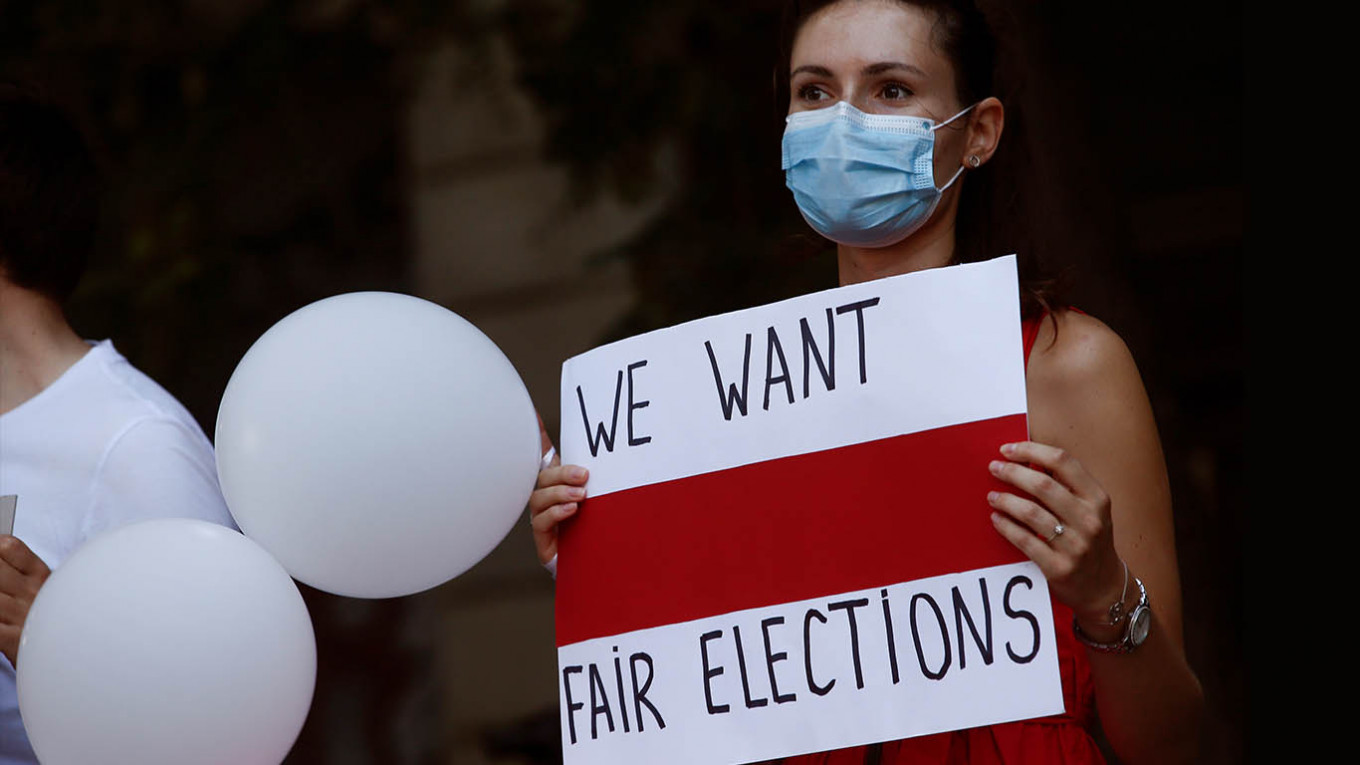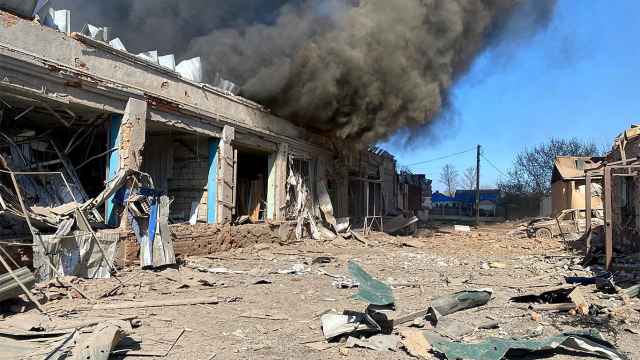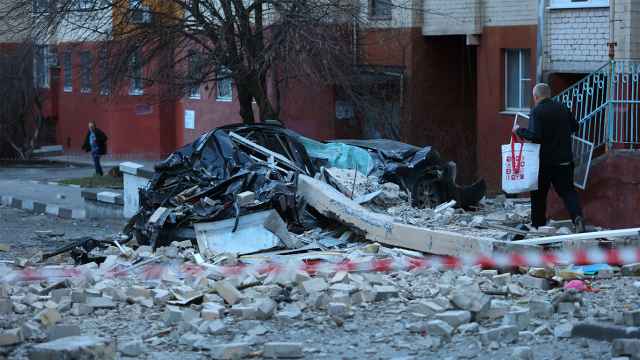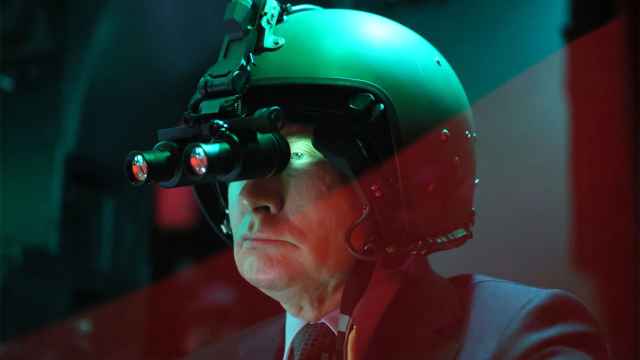As in the past, the regime met protests against the rigged 9 August elections with mass arrests and beatings – but with unprecedented brutality. Systematic torture of detainees, and their parading on television, exposed a culture of sadism. Svetlana Tikhanovskaya, de facto winner of the election, was coerced, in the office of the head of the Central Election Commission, into reading out a statement calling on protesters to return home. She was then bundled across the border into Lithuania.
Designed to intimidate, these actions instead provoked outrage. As testimony of state violence grew, and the first deaths were announced, new groups joined the protests. These included, crucially and for the first time, workers in major state-owned factories.
Mobilization and retreat
A dam-burst of protests swept across the country, changing the moral and psychological landscape of Belarus forever. Their seas of white-red-white flags, a forbidden symbol of Belarusian freedom, were a vivid and decisive rejection of the regime.
Faced with this emphatic show of popular strength, the regime took a step back. Most detainees were released — though dozens remain unaccounted for — and arrests were scaled down. In a few towns, security forces lowered their shields and were embraced or given flowers. Lukashenko and other senior officials who tried to rally support in the factories were met by chants of ‘Ukhodi!’, ‘Leave!’ In Grodno, close to the western border with Poland and Lithuania, regional authorities began a dialogue with protesters.
The movement for change appeared to gain the upper hand. But Lukashenko had no intention of giving up power. He began to plan his response to a situation beyond his experience or understanding.
Hardening and internationalization
In the past few days, a new phase has begun. Two factors define it. Firstly, Lukashenko has made preparations for a fresh and more severe crackdown. At a meeting of the Security Council on 18 August – the third since the election – he issued orders to prepare for this. Soon after, the Defence Minister Viktor Khrenin steeled the army’s nerve for martial law, telling subordinates that ‘temporary duties’ could require them to shoot at civilians. In a public video he warned that protesters with ‘fascist flags’ would have to deal ‘not with the police, but the army’. He has twice said that the army’s actions might be portrayed as ‘genocide’.
Lukashenko has ruled out anything but confrontation. He condemned the Co-ordinating Council set up by Tikhanovskaya for political dialogue as an attempt to ‘seize power’, and opened a criminal case against it. He removed the compromise-minded governor of Grodno region and had strike leaders at major factories detained. He claimed Belarus faced a foreign-inspired ‘colour revolution’, as well as threats from NATO. He put key military units on full alert and sent them to the western border.
Then, on 22 August, Lukashenko set an ultimatum. He gave protesters ‘Saturday and Sunday to think about it’, and warned that from Monday ‘power must be power’.
The second new element in the crisis is its growing international dimension. Since 7 August, Lukashenko and Putin have spoken by phone five times, twice more than in the whole of 2019. Lukashenko has openly called for Russian support, warning that protests would spread to Russia. Russian advisers are now believed to be in Minsk. Russian TV journalists have replaced those striking in support of change.
With the United States largely invisible, the European Union is leading the West’s response. Belarus is an early test for the EU Commission that took office in December 2019 — and in particular for its goal of an ‘ambitious, strategic and assertive’ role in the world. Its virtual summit on 19 August refused to recognize the election results and announced sanctions on those responsible for falsification and repression. EU President Ursula von der Leyen went further, announcing that the EU stood ‘ready to engage in all possible ways to accompany peaceful democratic transition of power’. This initial response – far stronger than in the past – sets a high standard for future measures.
Attrition or showdown?
Where do things stand now? On one side is a population — not merely ‘the opposition’— united in its desire for freedom. On the other is a regime stripped down to a skeletal core of state officials and security forces. It wields violence but lacks legitimacy or any way of restoring it. This is now, in effect, an occupation regime. Neither side can yet prevail. Less clear is whether a showdown battle or war of attrition will shape the outcome. The role of time and choices will be decisive.
Huge protests on 23 August showed that the population is neither afraid nor exhausted. Their defiance of Lukashenko’s ultimatum has called his bluff. He may now feel compelled to act forcefully or lose credibility within his circle. But doing so, especially by using the army, could force the issue of elite loyalty and thus become a moment of truth. The state violence needed to quell protests could exceed anything Europe has seen, outside of the Balkan wars, for decades. It would isolate Belarus from the West and create an international outrage.
The alternative is a trial of endurance. Lukashenko will count on lower-level repression, and the economic hardship of those striking or sacked, to sap the energy and momentum of protests. The protesters in turn will seek to keep the initiative, and Lukashenko off balance, as they have done effectively so far. They will try to persuade key officials of the hopelessness of the status quo and the need to enter into dialogue.
A financial crisis on top of current economic decline would make this urgent — though here, as in other ways, Russia has resources to prop up the regime if it wishes. The 18-month political crisis in Venezuela, a more pluralist country whose opposition enjoys US support, shows how long such a confrontation can last.
Any violent return to the past would be sullen, unstable and disastrous for the country. Nor can the present stand-off last indefinitely. The only certainty is that more change will come in Belarus.
This article was first published by IISS.








